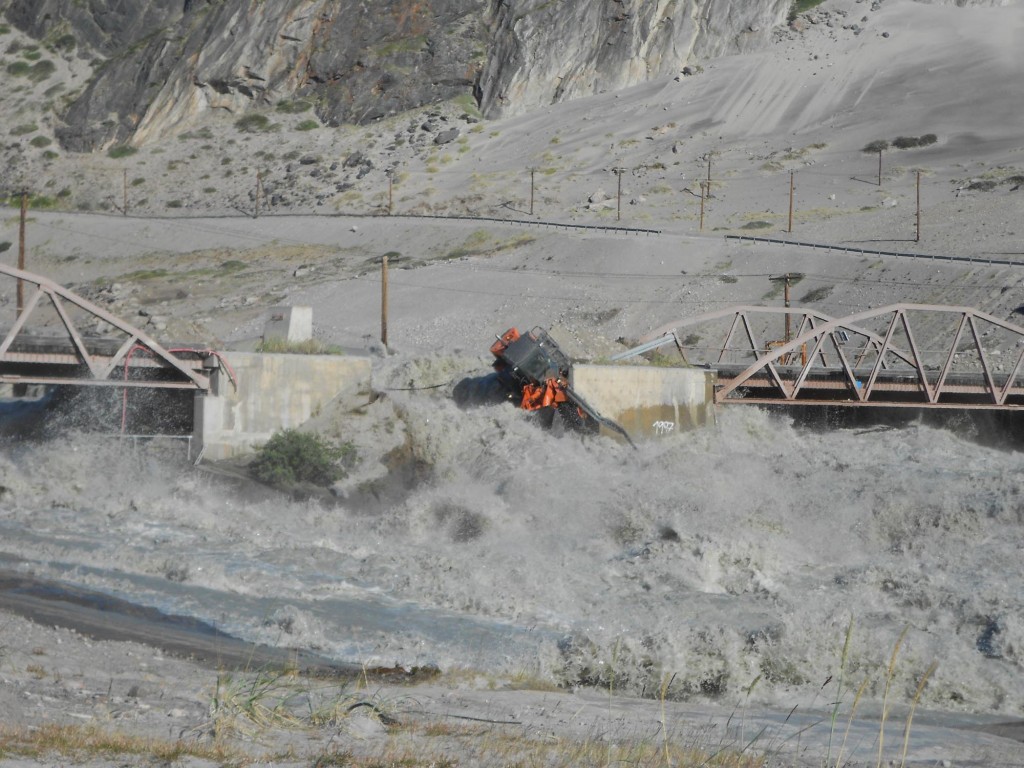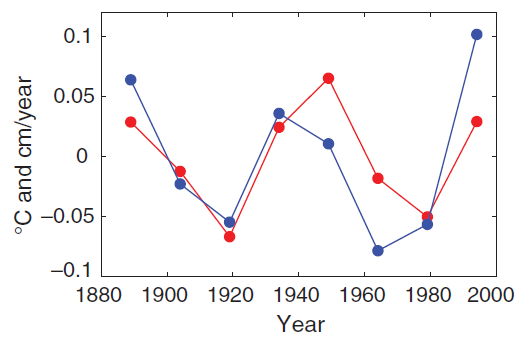Eric Steig
Last July (2012), I heard from a colleagues working at the edge of the Greenland ice sheet, and from another colleague working up at the Summit. Both were independently writing to report the exceptional conditions they were witnessing. The first was that the bridge over the Watson river by the town of Kangerlussuaq, on the west coast of Greenland, was being breached by the high volumes of meltwater coming down from the ice sheet. The second was that there was a new melt layer forming at the highest point of the ice sheet, where it very rarely melts.
A front loader being swept off a bridge into the Watson River, Kangerlussuaq, Greenland, in July 2012. Fortunately, nobody was in it at the time. Photo: K. Choquette
I’ve been remiss in not writing about these observations until now. I’m prompted to do so by the publication in Nature today (January 23, 2013) of another new finding about Greenland melt. This paper isn’t about the modern climate, but about the climate of the last interglacial period. It has relevance to the modern situation though, a point to which I’ll return at the end of this post.

